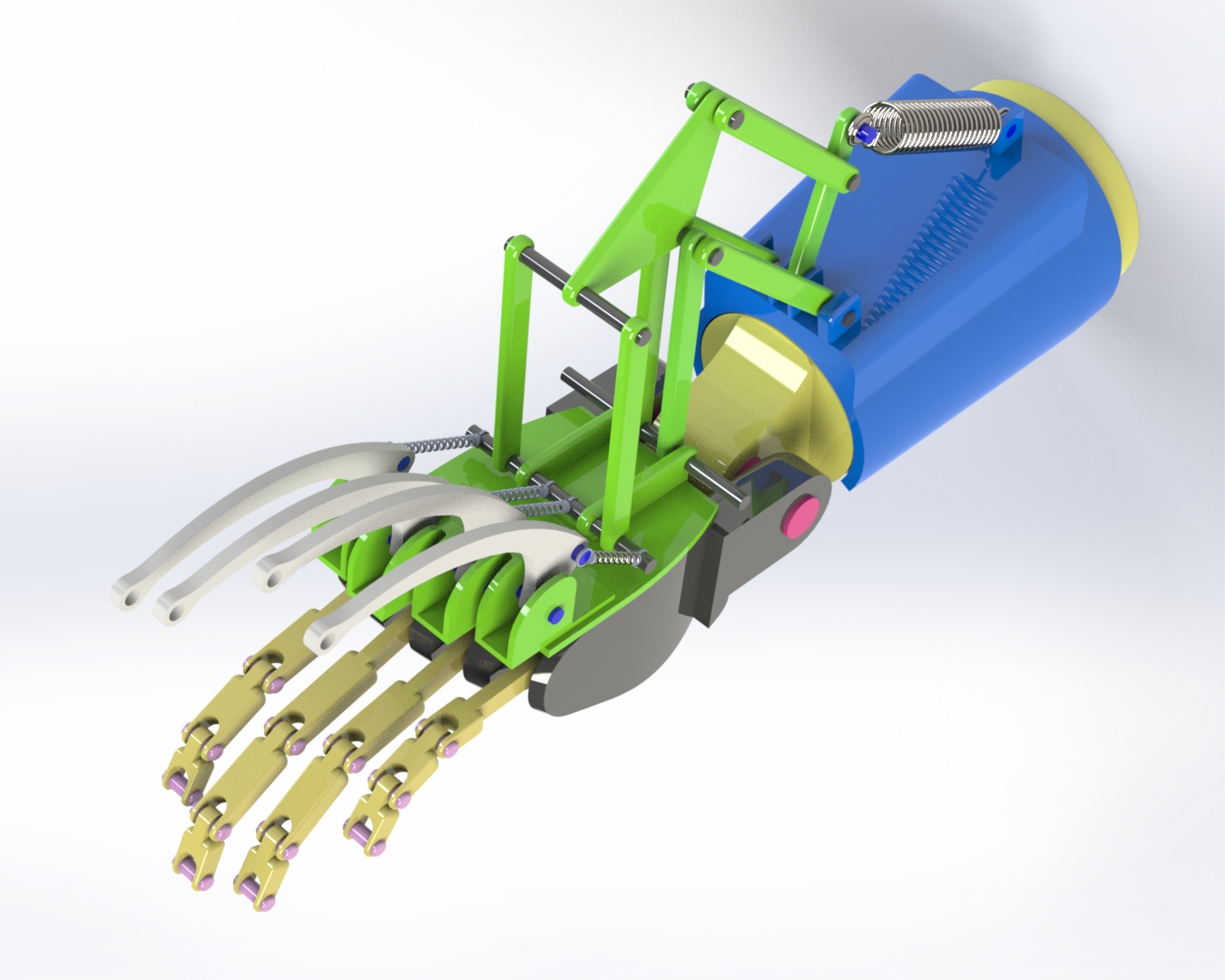Design and Analysis of
Orthotic Device
B.Tech Final Year Thesis

The work presented focuses on addressing hand rehabilitation via design of an orthotic device and carrying out analysis to find out its effectiveness. This study is also directed towards potential application of this device to industrial domain. Industry personnels are subjected to repeated strains which gets accumulated through time and lead to chronic damage. Our attempt was to investigate whether the said orthotic device can be extended to support industry workers and prevent strain injuries. The data for the given study is collected through surveys conducted on campus to find out the proportions of human hand to effectively design the orthotic device.
The potential societal impact of a home-based training device is high. If commercialized, it has the potential to significantly improve hand rehabilitation. Instead of the short sessions up to three times per week at times optimal for the clinic, patients can now practice at home at the times that fit their schedule best, with only occasional visits to the clinic to discuss progress. In such a workflow, therapists can monitor the progress remotely. Our final design of the hand and wrist exoskeleton for post-stroke rehabilitation at home is a compromise between complexity and functionality. It is more compliant with less friction in the finger mechanism than its predecessors with the help of its improved finger actuation concept.
Our design can be adopted into the industry since with a material selection of AISI 1095 Carbon Steel it can effectively support 37.91 Kg. However cost of producing them in bulk will be a major factor. Hence research into polymers should be done to find out high strength and cheap materials.